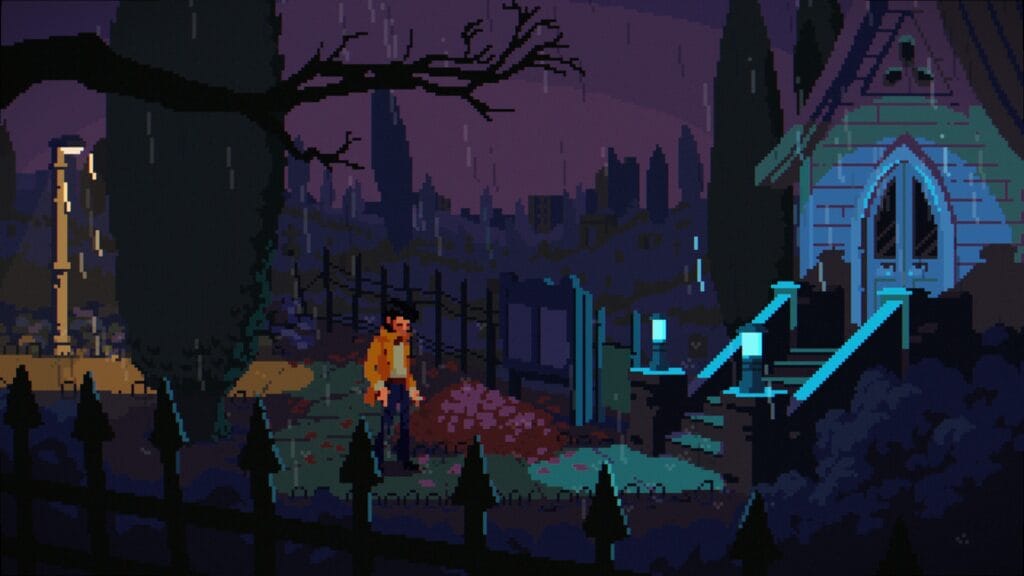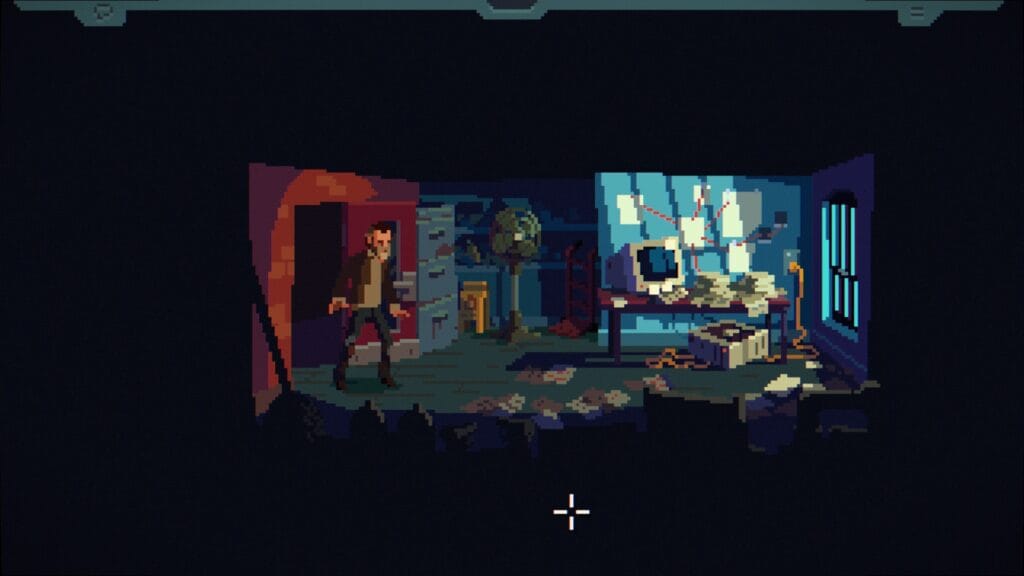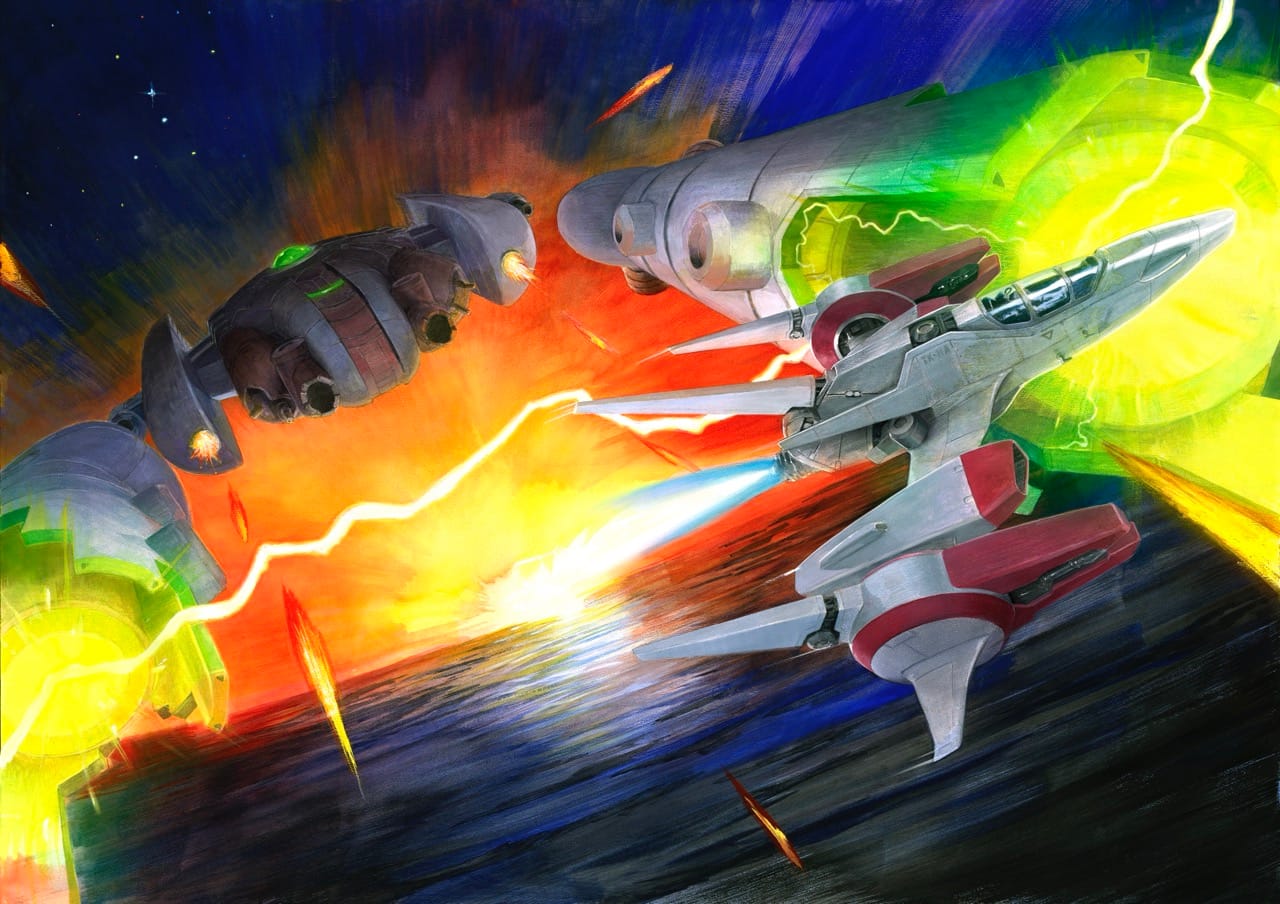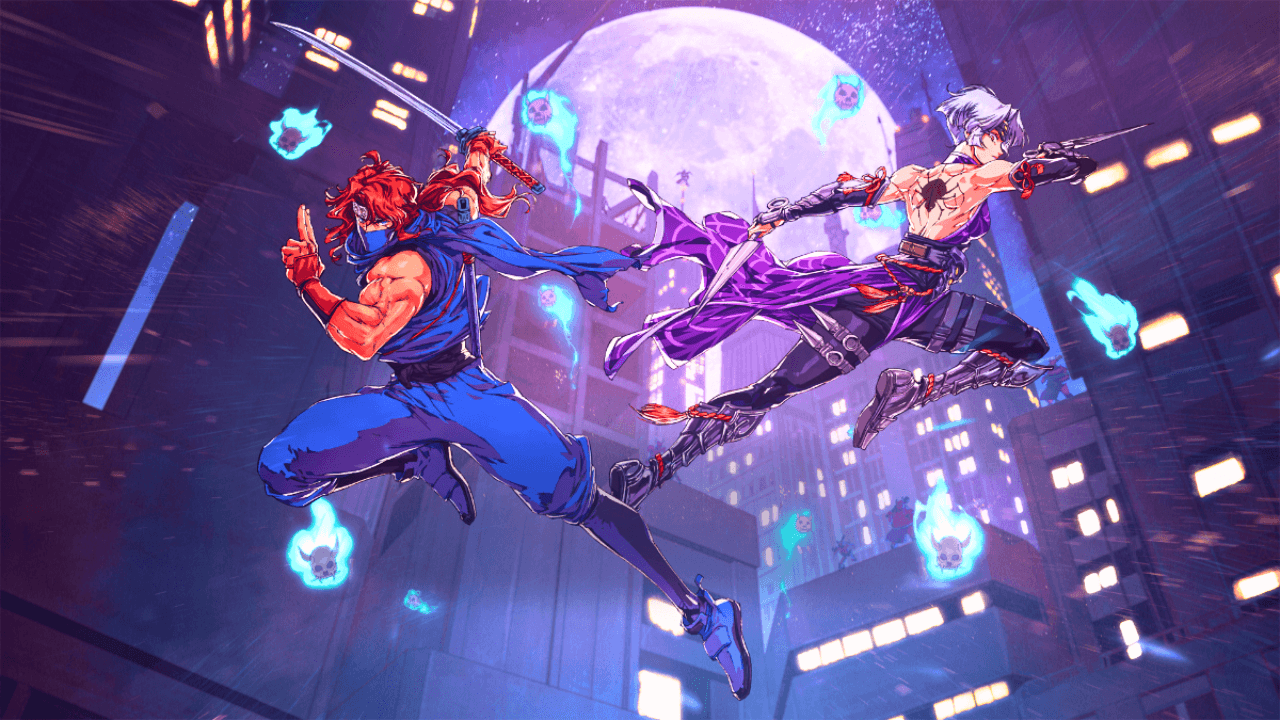As there are simply so many point-and-click adventures these days, it’s often difficult to find a gimmick or angle which makes you stand out from the pack. Some like Tails Noir (or as it was known at the time I reviewed it, Backbone) go for incredibly detailed pixel art, while others like Rosewater (released earlier this year) might have a really fleshed out world. The Drifter takes a third route; a compelling central mystery and well written characters which help to keep the player invested. It’s also notable for making its death mechanic part of the structure and plot of the game, in a remarkably intuitive way.
You play as Mick Carter, who has been an itinerant for a number of years but is returning to his home city of Mawson, Australia (in real life, a district of Canberra) following the death of his mother for her funeral. Mick has a kind heart but is suffering from a lot of past trauma, including the death of his son and the breakup of his marriage. Upon arriving, he watches soldiers brutally shoot an unarmed homeless man, before he quickly becomes a target himself, framed for murder and hunted by both the heavily armed soldiers and the city police. Many chapters involve Mick getting into a life-or-death situation, and that’s when Mick discovers an extremely important fact: He can’t die.
Every time Mick experiences what would be a fatal end, time rewinds to just prior to his death, allowing him to make different decisions or try different solutions to his predicament. In the first such example you’re drawing after having been thrown into a reservoir; a little while later, you’re hiding from the cops after they suspect you of murdering a fellow homeless person and your old friend, Bill. Each of these acts essentially as a little puzzle; you can die as many times as you want, with time being rewound to shortly earlier, letting you use the knowledge you’ve gained to try a different tactic. This concept is fundamental to the story and explored in greater detail as the mystery deepens.
Voice acting is excellent from the Australian cast, with Adrian Vaughan’s voice as Mick having that great mix of gruffness and also intensity, particularly when he’s having to describe a variety of horrible and gruesome things he’s witnessing. Shogo Miyakita is also great as Detective Inspector Hara, who has a habit of calling everyone “boss”. Bronmwyn Turei similarly is very reassuring as Mick’s estranged wife Sarah. This isn’t a deeply Australian game in terms of content, but the cast certainly regularly remind you of the setting with some occasional Aussie slang thrown in. The most important point is that the voice acting and writing does make you care about the core characters, feeling invested as Mick tries to clear his name and reconnect with his family.
As point-and-click’s go, The Drifter is pretty streamlined. Your mouse cursor will change shape depending on what you can do when hovering over items in the environment, from picking up items to examining them. Talking to other characters is determined by the list of discussion topics you have available, which is kept visible next to the inventory menu, keeping a running tally of what information has been learned. Inventory items can be picked up and occasionally combined with other items, although thankfully never in an obtuse manner. The puzzles are predominantly straightforward; some of the death sequences which are on a timer and require you to do a number of steps in a particular order can be a bit finicky and result in at least a few tries before you pull it off correctly.
The art style is that kind of low-fidelity high-detail look which has become very popular in many adventure games. This game is most reminiscent of early Lucas Arts adventures like Monkey Island 2: LeChuck’s Revenge, with stylized moody colours in many scenes, giving the whole game a noir-twinged atmosphere, particularly as it takes place exclusively at night. Similarly, dialogue subtitles appear over the head of the character who is speaking by default in traditional style, although you can turn this off if you wish. The music is also very dark and moody, mirroring the various life-and-death struggles Mick is subjected to throughout the game.
The game can be a bit bloodthirsty and graphic although the pixel art disguises it somewhat, the sound effects can still be unnerving. The interesting characters and evocative story are The Drifter’s most enjoyable elements and I continually wanted to start the next chapter as soon as the last had finished to see where the adventure went next. The plot goes in increasingly sci-fi directions as time progresses which adds a lot of enjoyment, and thanks to Adrian Vaughan’s charismatic voice, it very much helps to put you into Mick’s shoes of being confused and desperate, unsure whether he is going mad himself. Adventure game fans should absolutely not miss what The Drifter has to offer.







